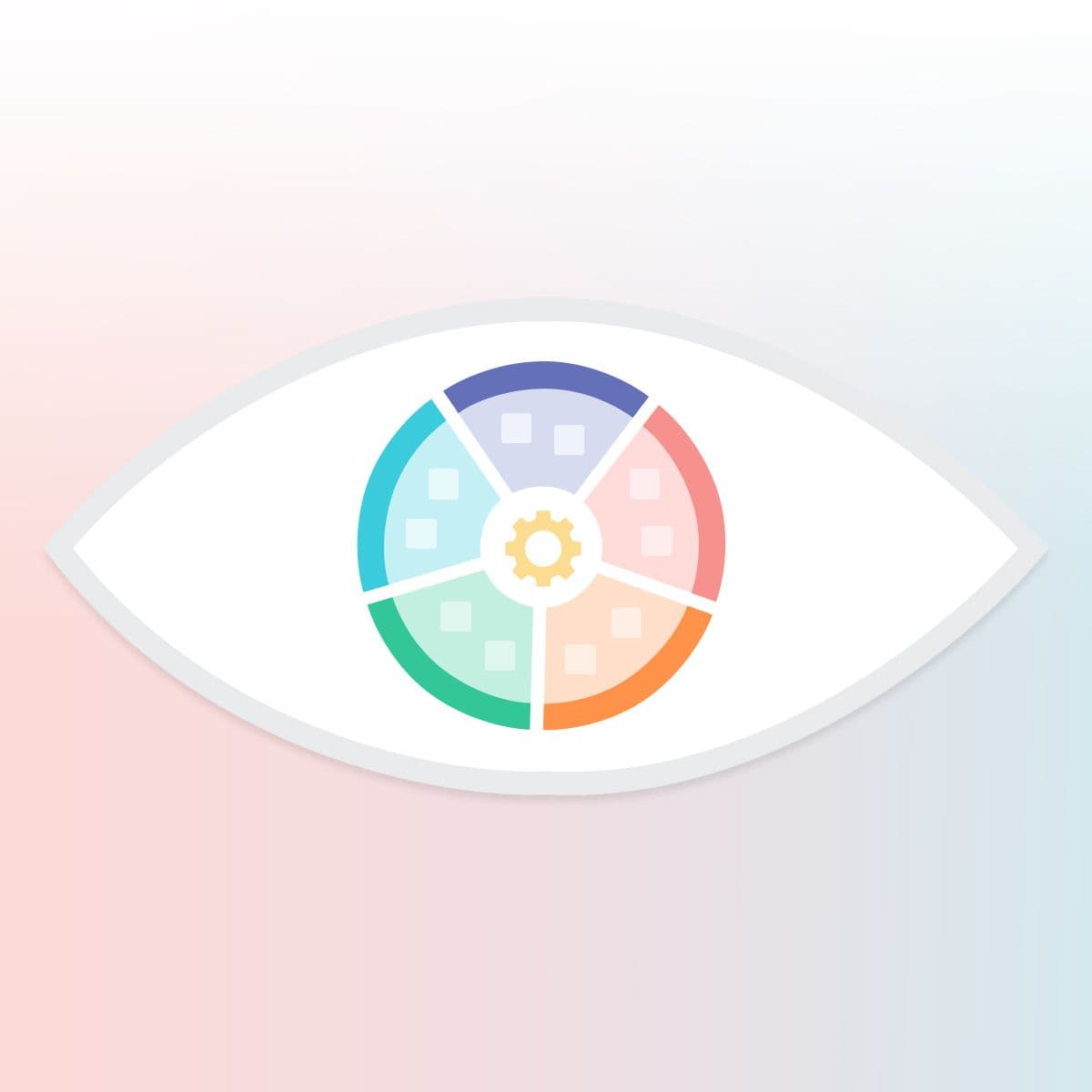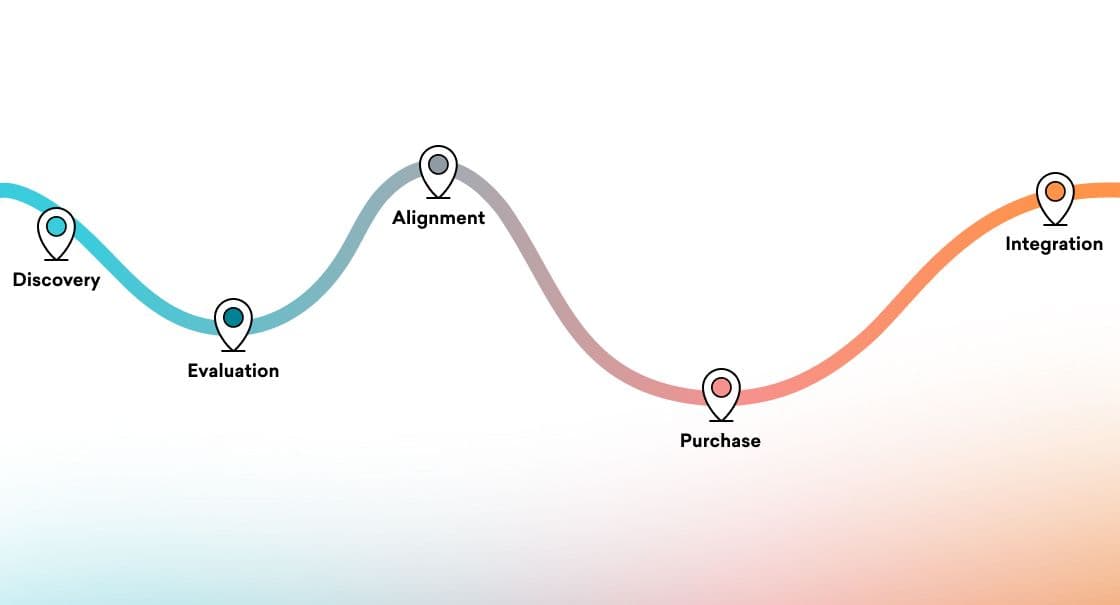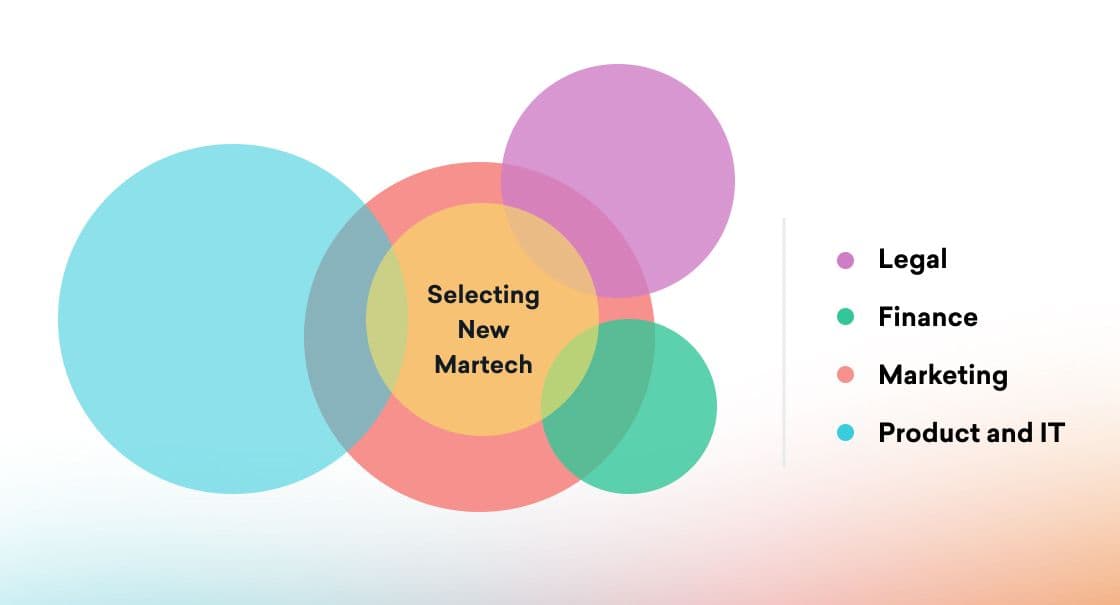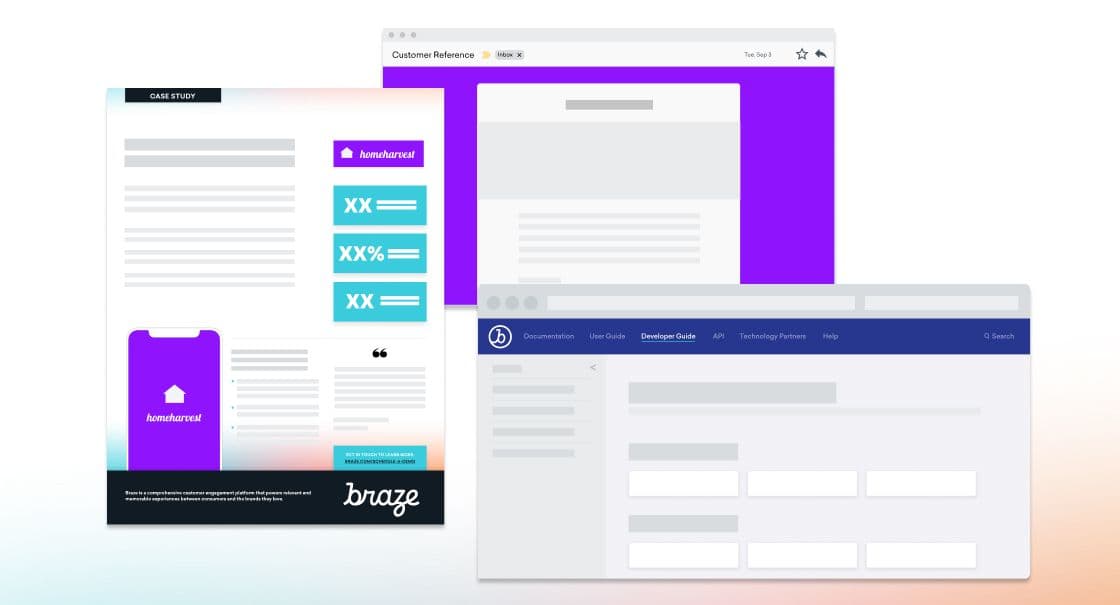How to Keep Your Sanity While Assembling a Custom Marketing Tech Stack
Published on March 03, 2021/Last edited on March 03, 2021/12 min read


Rebecca Nackson
Founder and CEO, Notable GrowthMore than ten years after the introduction of the modern push notification, the rise of mobile has reshaped today’s business landscape, creating new opportunities for brands looking to reach, retain, and monetize their customers while also transforming customer expectations for the companies they engage with. To meet today’s customer engagement challenges, marketers need the right mindset—but they also need the right technologies.
That’s often easier said than done. A few years back, while overseeing growth for a leading brand, I was tasked with updating our marketing stack and while I’m proud of what I was able to help them accomplish, working to fit together all those different solutions together without cross-platform expert guidance was lonely and difficult. The work was essential—the whole team knew that our messaging initiatives left a lot to be desired and, as is so often the case, there was no budget for additional headcount. But it was a huge responsibility. Was I ready to take on this project? Did I have a support system to ensure that our implementation was a success? Was I even qualified to bring new technologies into the fold?
Eventually, through trial and error...and some more error...we ended up with the right tools to reach the right outcomes and were able to empower our organizations to make big strides when it came to growth. But the process would have been so much easier and faster if I’d had the right guidance to get me through those overwhelming months. In that spirit, let’s explore the essential lessons that I learned along the way:
Three Key Best Practices When Assembling a Marketing Technology Stack
Every business has unique circumstances (including budget, use cases, and teams) which means that there’s no one collection of technologies that’s ideal for every brand or industry. The key to choosing the right tool—and the order in which to add them to your stack—is distilling what your needs are on a granular level and then doing the research and validation to find the new tool (or stack of them) that best meets those most pressing needs. These best practices are designed to help you get there without unnecessary time, expense, or stress.
1. Buying Isn’t the Finish Line: Pace Yourself Accordingly
Buying and integrating new marketing technology is a commitment—it’s going to change the way your team does business, how you connect with your customers, and how your customers interact with your product. But don’t panic! Just because it’s an important decision doesn’t mean it has to be a painful, drawn-out one.

Remember, selecting a particular technology—whether it’s a customer engagement platform, an analytics provider, a customer data platform (CDP), or some other solution—is just the first step in your journey toward a successful customer engagement strategy. Given that, you don’t want to invest all your time and resources on the first mile of this marathon. (The longest stretch of the customer engagement marathon is deciding how you’re going to use the new tools at your disposal to drive engagement and increase revenue…)
For a lot of brands, the most efficient way to select a new technology for your stack is by putting together a request for proposals (RFP)/request for information (RFI) that’s based on your specific needs and desired outcomes. But when you’re sitting down to put that RFP/RFI together, there are a couple pitfalls you need to be careful to avoid:
- Creating the World’s Most Comprehensive List of Questions: It can be tempting to google other RFPs/RFIs and then use them to add question after question to your must-haves list; however, I’ve found that taking this approach actually ends up distracting you and your colleagues from your customer engagement end goals, rather than leading to better answers. (Read: It’s a gigantic waste of time.)
- Ruling Out Any Technology That Isn’t the Best at Everything: The truth is, no one technology does everything best—and, sadly, your attempts to find one will end up being futile. Instead, be clear about the marketing problems that you really need to solve for and focus on the solution that makes that possible for your team and its strategy.
- Neglecting to Think Through Cross-Solution Data Flows: Even the best technology solution can become a burden for your customer engagement efforts if it operates in a data silo. Modern marketing requires a holistic view of each user and your customer engagement efforts as a whole, and that can be extremely hard to come by if you assemble a technology stack full of solutions that can’t communicate with each other in timely, meaningful ways.
One additional balance to strike? Picking a tool that addresses the more pressing issues you face today while giving you room to grow. It’s important to ensure that the technologies you choose for your stack are capable of growing and scaling with your business over time—after all, you don’t want to be swapping out a new analytics technology year after year after year. But the present matters, too. If you pick a solution that can’t effectively solve your current needs, you’ll either end up with a marketing strategy that you can’t successfully execute or you’ll end up rewriting your marketing plan on the fly to try to compensate for the technology you bought. Don’t buy with eyes that are bigger than your stomach or you’ll pay for a new tool you have no time to use and worse off, complicating your time-to-value.
2. There’s Strength In Numbers—So Get Stakeholders Involved Early
It’s normal to feel a little anxious if you’re responsible for choosing a new technology; after all, there can be a lot at stake. Keep in mind that the people around you may be just as nervous about adding a new technology to their customer engagement mix. I’ve found that skeptical responses from teammates—”Do we REALLY need a new tool?”—are often really their way of expressing that “It sounds hard to implement/learn to use/pay for and I need more information/reassurance/time to consider before I’m on board with choosing it.”

The best way to avoid this kind of reaction and reduce your own stress? Include the people who will be impacted by the introduction of a new solution in the selection process in a real, concrete way. After all, it takes a village to effectively implement and leverage any marketing technology, so it’s smart to have everyone buy-in from the very start. That said, sometimes you’re going to get pushback from stakeholders no matter how you approach it. Let’s dig into tactics to turn a “No” (which is pretty hard to work with) to a “Prove it” (which is a perfectly reasonable ask).
When someone flat-out rejects your recommendation to bring on a new marketing technology, it’s possible—even likely—that they don’t have enough information to fairly assess the rationale and validity behind your recommendation . Start things off on the right foot by coming to the table with a list of benefits the team will get from implementing this new technology. It’s also helpful to identify potential challenges, like the cost and technical support needs associated with the solution, and share how you plan to address them.
All that said, Big Expensive Ideas can be hard for colleagues to sell each other on. Sometimes the case will be made best by outsiders. With a third-party consultant overseeing an evaluation, it can be easier to make a dispassionate case for support that will more easily sway stakeholders. But, speaking as someone who’s often been in that position, we often find ourselves having to overcome skepticism in order to reach alignment between stakeholders. Here are a few tactics that I like to use to help socialize a viewpoint across an organization and help everyone feel involved in the process:
- Create a common language for talking about the process that highlights your common goals: If you focus your pitch on driving additional sessions and one of the stakeholders doesn’t see the value in that metric, you may well be wasting your breath. Find common ground and then use a shared vocabulary to express how your recommendation can help reach the goals that you all agree upon.
- Deliver information in a manner that would speak to you if you were the recipient: It’s entirely possible to have the facts on your side and still fail to win over skeptics in a situation like this. Avoid that outcome by thinking through what presentation approach would resonate with you if you weren’t already involved and then use that as a baseline to design a strategy that keeps each stakeholder’s preferences front of mind.
- Push on vivid data experiences to move beyond dashboards, reports, and embedded visualizations in order to provide clear, actionable insights: Whenever it’s possible to use data to dramatize the value of your recommendation in clear, vivid ways, take full advantage. Remember, too much data can be overwhelming and as paralyzing as having too little, so be mindful of what information stakeholders really need and do what you can to showcase that data as effectively as possible, even if it takes more time and effort than sharing a spreadsheet.
- Take advantage of documentation and standardization to foster cross-team collaboration: As much as possible, strive to ensure that you’re providing standardized information on each element of your proposed stack and its anticipated impact. Lean on documentation from vendors to get the key details that matter to your company’s evaluation and to validate your assumptions about each potential component.
- Ensure that there’s a single source of truth when it comes to related business data—one that’s unified, trusted, and comprehensive: Ideally, stakeholders should be able to come to one place to learn everything they need to know about your proposed stack and each of its components. Take the time to be comprehensive and to be smart about how you assemble and surface that information hub; different businesses consume information differently, so make sure your approach matches your company’s reality..
3. Enlist Sales People To Help With The Selling
There are two times each year when you’ll want to nurture that relationship with sales people: When you’re making dinner plans at a conference...and when you’re building a case for buying a new technology.
I know we’re all used to dodging those emails and calls, each one promising that their company—and their company alone—has the magic product that will cure all your brand’s ailments. And while this kind of outreach can be frustrating during the early stages of the sales cycle, when you’re trying to determine which technology is best equipped to fit your company’s needs, it’s JUST the thing when you’re building a case. Think of them as an extra team member who is shooting for the same goal as you, but probably also one who has the slick slides and compelling data you need to really make your point. Vendors are always asking to be called partners. Now is the time to let them prove it by providing:

- Case Studies: If your preferred vendor is worth its salt, the salespeople you’re working with will be able to share great use cases from similar clients—ideally with before and after results to showcase what’s possible with their technology.
- References: Social proof is powerful, and hearing from both long-term customers and brands that made the decision to buy from this vendor recently can do a lot to validate that this solution is the right one for your company and its needs.
- Resources: While choosing a new technology can be quite a process, it’s only the beginning of the journey—to get the full advantage of the solution you’re going with, you’re going to need resources to support your company’s implementation of the new platform (and to ensure it can play nice with the other parts of your stack), as well as thought leadership pieces to inform your marketing strategy and best practices content to nail the tactical side of customer engagement. Your vendor should be able to point you in the direction of all these assets before a contract is signed, so that you can be confident your team has everything it needs to use this new solution successfully.
A lot of people fail to take full advantage of what vendors can offer in this area, making extra work for themselves and lengthening the process. Not every buying process will require all of these kinds of assets, but when you need data, social proof, or just some guidance along the way, a thoughtful, dedicated salesperson can be your best friend.
Final Thoughts
Putting together a successful, built-for-purpose marketing tech stack is hard—and the same goes for assessing, selecting, and integrating each of the technologies involved. It’s pretty normal for people to fumble their first few tries at it, but getting it right (and doing it in a timely manner) is really important. With the right stack, you can provide the kinds of relevant, personalized, data-driven experiences that customers crave and that keep them coming back for more. Get it wrong, and your brand may find itself serving up broken, frustrating experiences to its audience.
To make this process a little easier, I’ve put together an assessment worksheet walking marketing, growth, and engagement teams through the process of building out (and taking advantage of) a best-in-class marketing tech stack. From where to begin and what metrics matter to tooling assessment best practices and how to think about reworking your teams to maximize the success of your customer engagement efforts, it’s all in here.
Related Tags
Be Absolutely Engaging.™
Sign up for regular updates from Braze.
Related Content
View the Blog
The new inbox reality: How iOS changes are reshaping email marketing

Aparna Prasad

Experience optimization: Turning data insights into better journeys

Team Braze

December 2025 Bonfire Marketer of the Month: Jagex’s Emma Oliver
